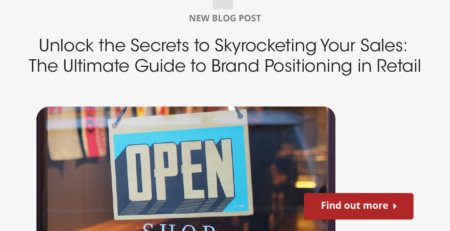Effective Recruiting on a Limited Budget
Honoring your recruitment budget and getting the best talent aren’t necessarily opposing ideas. Like many other aspects of the general business process, targeting your hiring process and aiming it at more particular goals will save waste and make for more effective hiring decisions at the same time.
But great hiring decisions depend on attracting the best applicants in the first place. Employer branding and incentives combine to make people want to apply to open positions. In many cases, companies who have a strong public image and ample benefits are able to attract talent and keep them on long-term simply because the work environment and the work duties have their own appeal.
Bolstering your recruiting tactics will help your company grow sustainably and drive toward its mission statement. Read on to find out everything your need to know about attracting the best talent to your company in a way that’s friendly to the bottom line.
Recruiting vs. Hiring
The difference between hiring and recruitment might seem nebulous but it’s important to understand if you’re in any kind of decision-making position in your organization.
At its most essential, hiring is short term and the end result of good recruiting practices. Recruiting is a more general and holistic approach that builds a kind of culture or public perception that applying to the company is a smart idea.
Hiring is how companies fill one position while recruiting is a long-term strategy with the goal of getting the best talent to apply when positions are open. Hiring is the result of good recruiting.
Recruiting should have the final hiring process in mind and also the developments that occur after repeated hiring. Company culture can be constructed over long periods with the right hiring strategy. For the people responsible for creating that hiring strategy, recruitment is key.
Recruitment for Hiring
The hiring process or individual roles is ideally a localization of the long-term recruitment strategy.
You can also use the link between recruitment and hiring to bolster the business processes within the organization. Any strategy that is implemented for a sales team or creative team in charge of designing user experience with a final product should start with recruitment.
The recruitment process is also the end result of the company culture and other initiatives. It’s a two-way street between the people who define mission statements and the next staffing generation. Whatever policy is put in place determines the people who will be hired as a result and then those people either continue or make significant changes to that policy.

How Hiring Managers Recruit
It takes many tactics to attract the best talent. The most talented professionals are attracted by different benefits and also by the various challenges presented by different jobs.
One common mistake made by many companies is that they focus on skills that are already developed and built up elsewhere. While it may seem convenient to source talent that’s fully trained, it’s also very risky to depend on outside sources to train talent. Besides that, it’s also much more difficult to convince highly qualified passive candidates to apply to open positions.
If you’re looking for the best talent and you have a limited recruitment budget, you have to be proactive and open about what happens at your company and why people should want to work there. With the right advertising materials, hiring managers can broadcast job openings in online job boards, universities, trade groups, geographically-based boards of commerce, and other organizations with large memberships.
Theoretically, hiring managers post job advertisements and then sift through applicants to find the best person for the role via interviews. To save money on these advertisements and cut time spent on the hiring process, referral systems that incentivize current employees to recommend qualified contacts can cut down on resources used for hiring.
Staffing agencies like icreatives are also a great way to cut down on costs and still find the best talent possible to fill open roles. Since we work exclusively in creative industries, we have the experience and know-how to spot a stellar candidate by their portfolio. We constantly work to maintain a pool of highly talented creatives that we can pair with the best companies.
Since the talent pool is already there, we can help businesses fill roles much faster. It takes far fewer resources on the company side because we already know where to look for the best creative talent and have their portfolios on hand. The entire process is shorter and the results are better than an internal company process, especially when decision-makers are uninformed about creative work.
Upskilling & Reskilling for Better Recruitment
Although the lifelong career at a single company has become rarer, working people are still concerned with having a healthy career wherever they are. Companies should take steps to offer them chances to train and take on more responsibility or make a lateral move to a new field if their position is no longer necessary.
Upskilling and reskilling are attractive employment benefits that often cost less than giving employees raises outright. Retention rates increase and employee morale is higher when everyone has access to ongoing education. Plus, their work will be better if they are trained more.
It might not be a magic bullet, but skill-building resources do demonstrate that management and the company have the interests of their employees in mind. Some companies fail to understand how good hiring must transform into positive retention efforts for employees to stay happy. If they don’t see any future at the company they’re more likely to leave, and then you’re back at square one looking for new talent.
X Tips for More Effective Recruiting
If you want to streamline the way you look for creative talent, the best choice is to let icreatives take care of it. You can also use some of the following tips to reduce costs and find better talent to fill open positions.
1. Set Realistic Expectations
As companies create new roles they tend to have a hypothetical applicant in mind. Some of this ideation can’t be avoided, but it’s vital not to create a theoretical candidate that real people won’t match.
When you’re trying to stay within recruitment budget expectations are even more important. Salary limitations are likely to affect the caliber of talent that applies for a given position. Hiring managers and recruiters with unrealistic skill expectations are also prone to bad hiring decisions and receive fewer and lower-quality applications.
As talent finds job offers, the description of the role is one of the main determinants of whether or not they will submit an application. Skill descriptions that overshoot the mark or make unrealistic demands turn away great applicants.
That doesn’t mean you can’t ask for a high skill level and experienced work background in a job description, but it does mean you should know what’s important and what you can reasonably ask for. Don’t forget the value of on-the-job training for building better and happier workers.
2. Practice Good Time Management
As with most jobs, effective work is the most budget-friendly kind. For hiring managers and other decision-makers in the hiring process, wasting time is the most surefire way to miss the best talent through poorly located advertisements and a bad hiring process.
What you think is most important for effective hiring may not be. Or you could be spending too much time on certain aspects of recruitment even though they are important. Sourcing is one area where managers always get bogged down.
Although finding solid sources for talent acquisition is vital, that doesn’t mean you can spend all day reaching out to various leads. At the same time, you have to communicate with these leads the right way to engage them.
It’s a balancing act that is much easier to do if you incorporate the first tip. Nail down your expectations and you can tell hiring managers and other contacts exactly what you’re looking for, saving time on both ends. You’re more likely to get the results you’re looking for and everyone will take your business more seriously.
3. Strengthen Candidate Interactions
Naturally, any talking or interviewing done with potential new hires is important for recruiting and getting the best talent on board. You should engage candidates with friendly and upbeat conversations that get right to the point. As you want to save time for your leads, so should you want to speak candidly and effectively with potential hires.
Setting the right tone for these conversations is key and also one of the least expensive ways to make your hiring and recruitment practices more effective. One quick fix that is applicable for just about every company is to approach these interviews and conversations as an opportunity to sell the idea of the business to the candidate rather than as a one-way process where only the company gives its approval.
It will be a welcome change for most interviewees because companies tend to behave as the more powerful party during interviews and job talks. You can also change attitudes for gathering leads and sourcing candidates – it’s teamwork, in the end, these sources want to place candidates as much as you want to hire them.
4. Use Analytics
If you can’t measure your hiring performance by numbers then you won’t have any metric to gauge success. Record everything from the time it takes to hire to the number of applications received and balance it out with qualitative information such as feedback from participants in the process and you’ll have the full picture of your recruiting and make it more effective.
Not only will your recruiting be more effective, but you’ll also have tools to advertise yourself for new sources and leads. They may not be interested in all the metrics you have, but you can demonstrate that you’re interested in working effectively to foster a robust long-term relationship.
Traffic to websites and response rates for job advertisements are also helpful analytics. The more clicks and views you have and the more those figures are tied to high response rates, the more you know about how effective and successful your tactics are.
Equally important is a per-hire measure of how many days it takes to go from an open position to a filled one. Measuring this time from zero when a role has just been created rather than vacated can be a challenge, but you can usually start from the first time the need for the roles was identified and get a good idea about how much time you spent getting someone to fill the role.
Measure how many applicants you get from each source and try to keep some record of relevant demographics like age and experience level so you can create a thriving office culture and get an even balance of experience and fresh ideas.
5. Modernize Your Tactics
Most companies are already engaging in the push to online in their recruitment tactics. If you aren’t on that path yet, you need to be.
Tools like LinkedIn blend aspects of social media with professional information like job history and education. You can also collect accolades from others who have worked with you in the past so prospective employees are aware of the kind of work they can expect from you.
It doesn’t take the place of traditional interviews completely, but using LinkedIn and similar sites does speed up the process considerably.
Other digital tools like AI and algorithms allow managers to sift through huge numbers of applications quickly and search for relevant key terms so they can eliminate the absolute no’s from the possible hires and focus your energy where it’s most likely to lead to the results you want.
You can also use certain software to randomize the initial stages of the hiring process and hopefully eliminate the worst effects of individual biases. That will help show your company values diversity and reduce possible liability disasters.
6. Involve Your Current Employees
Empower your current staff to help select new employees and you’ll find you have a more connected staff and a positive office culture as a result. These employees know the ins and outs of the job the best and can generally make a more informed decision than higher-ups who aren’t as familiar with the day-to-day work process.
Involve these employees from the very beginning and have them help define the role before the job is even posted so you get the best band for your buck and don’t inadvertently overlook redundancies or double-assign work.
Giving people real power over decisions about hiring and role definition will also make them feel like a larger part of the team, which can boost retention rates and create more long-term employees, reducing the need for constant recruitment that can bleed out time and resources.
7. Build an Employer Brand
The attitude of current and former employees helps define the general perception of the company and how it is to work there. This is referred to as a company brand and it operates very similarly to the way branding works in product and service marketing.
You build a strong employment brand by caring about the office culture and the happiness of your workers. It’s not all about giving them flashy benefits like a free soda fountain or an in-office gym, though. They also need to have upskilling and reskilling opportunities and feel that they are part of the family, so to speak.
So making sure that people are leaving the company on good terms and happy with their role while they are there is vital to recruiting the best talent. Ideally, you’ll have such a good reputation that people will automatically apply to open roles and passive candidates will be more easily persuaded to joining your team.

Conclusion:
Recruiting the best talent is a constant challenge for many companies, especially because the recruitment budget never seems to be sufficient.
Luckily, there are many things you can do to boost your employer brand and find highly skilled people without spending a fortune. A creative staffing agency like icreatives is the best way to accomplish all this and also build a better and faster hiring process.
Use the tips in this guide to streamline your recruiting process and find the best talent without spending tons of time and money needlessly. You’ll have a more effective team and a more positive future outlook if you can bring in the best talent when you need it.












